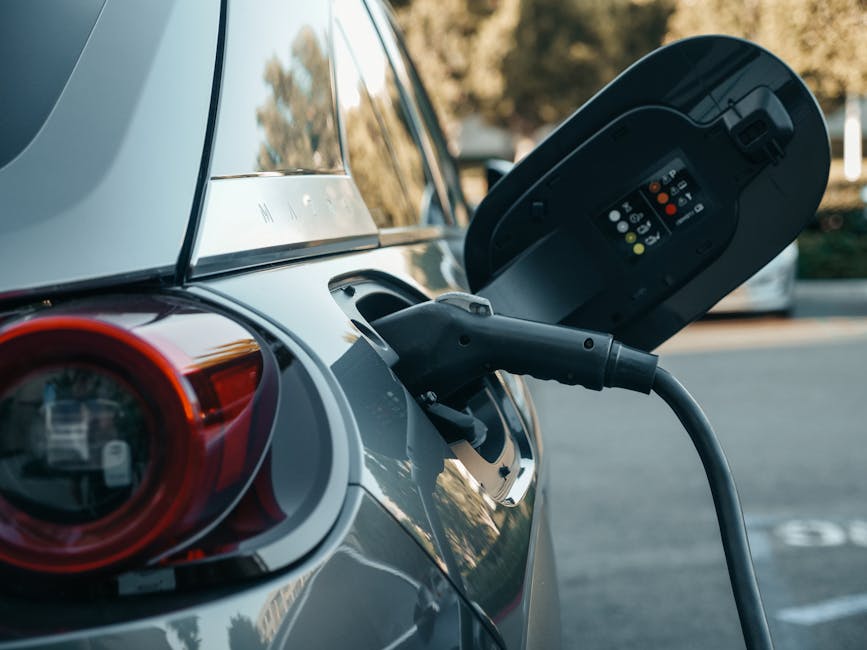As I delve into the realm of sustainable transportation, the lifecycle emissions of electric vehicles emerge as a pivotal point of discussion. Understanding the environmental impact of electric vehicles goes beyond their zero tailpipe emissions reputation. From manufacturing to disposal, the entire lifecycle of these vehicles plays a crucial role in determining their overall carbon footprint.
In this exploration, I’ll navigate through the complexities of assessing the emissions associated with electric vehicles at each stage of their existence. By shedding light on the production processes, energy sources, and end-of-life considerations, we can gain a comprehensive understanding of how electric vehicles contribute to reducing greenhouse gas emissions. Join me on this journey as we uncover the nuances of electric vehicle lifecycle emissions and their significance in the pursuit of a greener future.
Understanding Lifecycle Emissions
In exploring the environmental impact of electric vehicles, it is essential to consider their lifecycle emissions. This involves assessing the total greenhouse gas emissions associated with electric vehicles from production to disposal.
What Are Lifecycle Emissions?
Lifecycle emissions refer to the total amount of greenhouse gases released throughout the entire lifespan of a product, in this case, electric vehicles. It includes emissions from the extraction of raw materials, manufacturing processes, transportation, use phase, and eventual disposal or recycling.
Importance of Evaluating Lifecycle Emissions
Evaluating lifecycle emissions of electric vehicles is crucial for understanding their true environmental impact. By considering emissions at every stage of the vehicle’s life, from production to end-of-life, we can make informed decisions to minimize carbon footprints and work towards a more sustainable future.
Different Stages of Electric Vehicle (EV) Lifecycle
When exploring the lifecycle emissions of electric vehicles, it’s essential to consider the various stages from manufacturing to disposal to comprehensively assess their environmental impact.
Manufacturing and Production 
During the manufacturing and production phase of electric vehicles, emissions are generated through processes like battery production, vehicle assembly, and sourcing raw materials. For instance, the manufacturing of lithium-ion batteries, a key component of EVs, involves significant energy consumption and emissions. It’s vital to optimize production processes and source materials sustainably to reduce the carbon footprint at this stage.
Usage and Maintenance
The usage and maintenance phase of electric vehicles involves energy consumption during charging, driving emissions, and regular upkeep. Charging EVs from electricity grids powered by renewable sources significantly reduces greenhouse gas emissions compared to fossil fuel-powered grids. Proper maintenance of EVs, including tire inflation and efficient driving practices, can further enhance their overall environmental performance throughout their operational lifespan.
End-of-Life Processing
End-of-life processing of electric vehicles encompasses recycling, disposal, and reuse of components to minimize environmental impact. Recycling batteries and other components helps recover valuable materials and reduces the need for new production, lowering emissions associated with manufacturing. Proper disposal methods ensure hazardous materials are managed responsibly, contributing to a sustainable approach to the end-of-life phase of electric vehicles.
Comparing Electric Vehicles to Conventional Vehicles
When comparing electric vehicles (EVs) to conventional vehicles in terms of lifecycle emissions, it’s essential to consider emissions at each stage of their lifespan. Let’s delve into how EVs stack up against traditional vehicles in terms of environmental impact.
- Emissions During Manufacturing
In the manufacturing phase, EVs generally have higher emissions compared to conventional vehicles due to battery production and raw material sourcing. For example, the production of lithium-ion batteries, a key component in most EVs, involves energy-intensive processes that contribute to higher initial emissions. - Emissions During Use
During the use phase, EVs typically have lower emissions than conventional vehicles, especially when charged using clean energy sources. While driving an EV produces zero tailpipe emissions, the environmental impact largely depends on the energy sources used for charging. Utilizing renewable energy sources can significantly reduce emissions during the operational lifespan of EVs.
Emissions at End-of-Life
In the end-of-life phase, proper disposal and recycling of EV components are crucial for minimizing environmental impact. Recycling batteries and reusing components can help reduce the overall emissions associated with EVs at the end of their lifespan. Responsible management practices at the end-of-life stage are vital for ensuring a sustainable approach to handling EV waste.
Challenges in Reducing Electric Vehicle Emissions
When addressing the challenges in reducing electric vehicle emissions, two key factors play a significant role: battery production and disposal, and the use of renewable energy in manufacturing.
Battery Production and Disposal
In the lifecycle of electric vehicles, battery production and disposal present notable challenges in reducing emissions. The manufacturing of batteries, particularly lithium-ion batteries commonly used in EVs, involves complex processes that can result in high carbon emissions. The extraction of raw materials such as lithium, cobalt, and nickel, coupled with energy-intensive manufacturing processes, contributes substantially to the carbon footprint of electric vehicles. Additionally, the disposal of batteries at the end of their life cycle poses environmental concerns due to the potential for leaching of toxic chemicals into the soil and water if not managed properly.
Use of Renewable Energy in Manufacturing
Another critical aspect in reducing electric vehicle emissions is the incorporation of renewable energy sources in the manufacturing process. By powering the production of electric vehicles with renewable energy such as solar or wind power, car manufacturers can significantly decrease the carbon footprint associated with the manufacturing phase. Utilizing clean energy sources not only reduces greenhouse gas emissions but also helps in achieving a more sustainable approach to producing electric vehicles. Implementing renewable energy practices in manufacturing facilities is essential for enhancing the overall environmental performance of electric vehicles and advancing sustainable transportation solutions.
Innovations and Improvements in EV Technology
EV technology continues to evolve, with innovations aimed at enhancing sustainability and reducing environmental impact. Let’s explore some of the key advancements driving the progress in electric vehicles.
Advances in Battery Technology
In recent years, significant strides have been made in enhancing battery technology for electric vehicles. These advancements include improvements in energy density, charging speed, and overall performance of batteries. For instance, the development of lithium-ion batteries with higher energy densities allows EVs to travel longer distances on a single charge, addressing one of the key limitations of early electric vehicles. Moreover, research into solid-state batteries holds promise for safer, more efficient energy storage solutions for future EV models.
Increased Use of Sustainable Manufacturing Practices
The shift towards sustainable manufacturing practices in the production of electric vehicles plays a crucial role in reducing the overall carbon footprint of EVs. Manufacturers are increasingly embracing eco-friendly processes, such as recycling materials, reducing waste generation, and utilizing renewable energy sources in manufacturing facilities. By incorporating sustainable practices, the automotive industry can mitigate the environmental impact associated with the production phase of electric vehicles, contributing to a more sustainable future for transportation.




